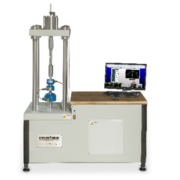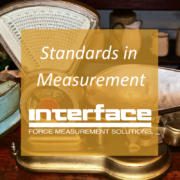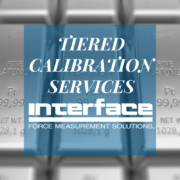Testing Lab Essentials Webinar Recap

Interface recently hosted an in-depth discussion about one of our favorite topics, testing labs. Our focus in this technical webinar centered on test lab devices, instrumentation, industry testing lab challenges and considerations, along with best practices. We also took a deep dive into different testing lab applications and how to modernize your test lab.
Force measurement experts Elliot Speidell and Jeff Boyd delivered an engaging and knowledgeable seminar, Testing Lab Essentials: Today + Tomorrow. Bringing decades of first-hand experience, they were able to provide product examples, tips, recommendations and lessons learned in working with testing lab professionals across industries, from automotive to medical devices.
Initial discussions in the event covered test lab basics, including types of products should be in every lab that performs testing of force, torque, and weight. The quick summary, force, torque and weight measurement devices including load cells and torque transducers of various models, calibration grade equipment and published standards, test stands, data acquisition systems and safety equipment.
One of the first steps in assessing any lab is the type of measurement equipment on hand to perform various testing requirements. Transducer selection criteria includes mechanical connection and load application, force magnitude and loading condition, cycle count, form factor restrictions, environmental conditions, additional measurements needs, such as multiple axis.
Testing labs often require different types of load cells depending on the type of products being tested and the applications in which the load cells will be used. Here are some common types of load cells used in testing labs:
- Compression load cells: Used to measure the compressive force applied to an object. They are commonly used in materials testing to measure the strength of materials such as concrete, metals, and plastics.
- Tension load cells: Used to measure the tensile force applied to an object. They are commonly used in materials testing, such as in tensile strength testing of metals and other materials.
- Shear load cells: Used to measure the shear force applied to an object. They are commonly used in materials testing, such as in shear strength testing of materials.
- Multi-axis load cells: These load cells are capable of measuring forces in multiple directions and are commonly used in structural testing applications.
- Torque transducers: Used to measure torque or twisting forces. They are commonly used in automotive testing, industrial machinery, and other applications where rotational forces are important.
- Fatigue-rated load cells: These load cells are designed to withstand high-cycle fatigue testing and are commonly used in materials testing and durability testing of products.
- Low profile load cells: These load cells are designed to fit into tight spaces and have a low profile, making them ideal for use in small-scale applications.
- High-capacity load cells: These load cells are designed to measure large forces and are commonly used in heavy machinery and structural testing.
Instrumentation is central to any testing lab environment. The three most common types of instrumentation found in test lab includes:
- Indicators: Indicators are used to convert the input signal to a local displayed value. Often they will have features like, peak capture, alarms, and analog outputs.
- Signal Conditioners: Signal conditioners are used to convert (amplify) one type of electrical signal into another.
- DAQ: Data acquisition systems are used to collect and analyze data from measurement devices. These systems may include software, hardware, and data processing equipment.
In a series of follow-up InterfaceIQ Blog posts we will detail other topics covered in this information packed discussion, including modernization, load frames and test stands, do and don’t tips, plus frequently asked questions.
Watch the complete webinar here:








